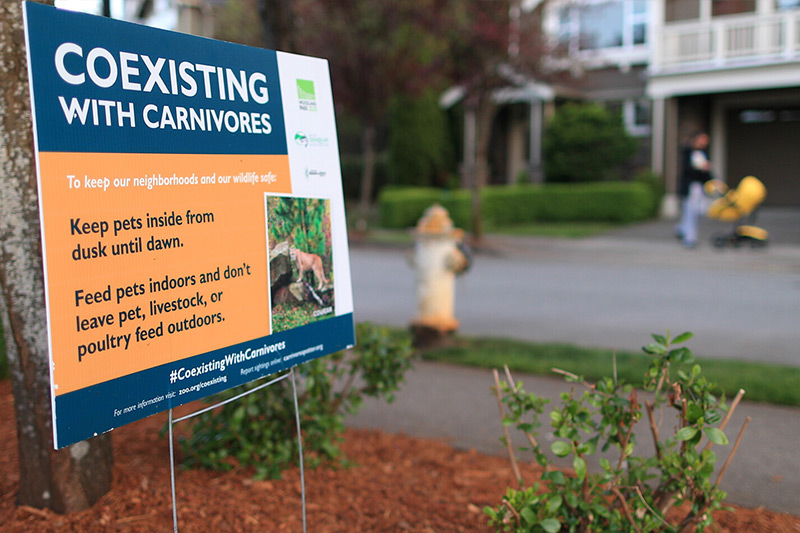Coexistence is Catching
PARTICIPATION LEVEL: LOW TO MEDIUM EFFORT

When you make your commitment to coexistence known, your neighbors will catch on. Communities can spread this positive influence by making their choices more visible to others. In this section of the website, you’ll find ways to create habitat for wildlife you want to attract, and ways to create safe distance with wildlife you want to avoid.
Express your commitment to these values with the following free resources, or come up with your own way to share how #IAmLivingNorthwest.
Say It
Use this coexistence toolkit as inspiration to spread carnivore safety messaging to your friends and family
Display It
If the area around your home provides wildlife with food, shelter, water and space to raise young and survive: Apply for a Habitat at Home sign from Washington Department of Fish and Wildlife